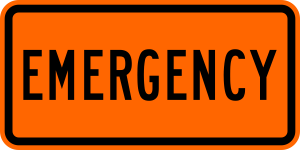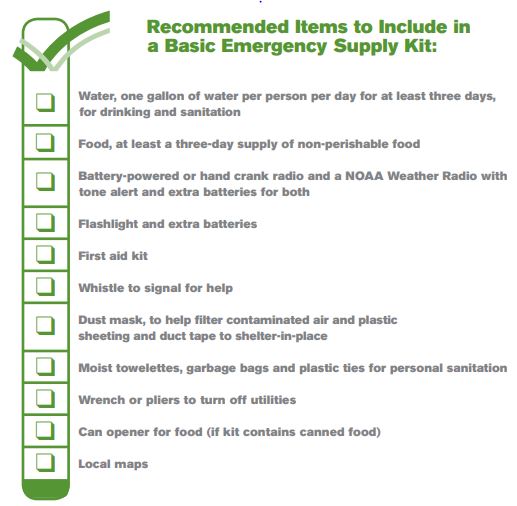If the recent flurry of natural disasters making headlines has you worried, you might be able to calm your nerves by preparing ahead for possible emergencies.
Damage from a major earthquake, flood, fire or even civic unrest might interfere with your ability to obtain food or water for several days — especially when the aftermath includes a power outage or plumbing failure.
The U.S. Federal Emergency Management Administration recommends you have at least a three-day supply per person (and pet) of long-lasting food and water on hand, and stock up on these these things as soon as possible so that you are prepared if something happens.

Water for Emergencies
For water supplies, plan on one gallon per person per day, to include both water for hygiene and drinking. If you prepare this supply from your tap water, put it in sterile containers dedicated to this purpose and refresh the water supply every six months. Commercially prepackaged water doesn’t need refreshing as often — and as long as it remains unopened, the water is good indefinitely.
It doesn’t hurt to have more than a three-day supply, since that beats running out of supplies during an emergency. On the other hand, remember not to let excessive fear of the unknown lead you toward impulse purchases — that mindset has enabled a cottage industry of emergency supplies products to grow like wildfire (pardon the pun).
Food and water marketed specifically for emergencies tends to have significantly higher prices than what you would otherwise spend putting together your own emergency stash.
Prepare Your Own Supplies
All you need to do is select food that lasts a long time, does not need refrigeration and requires minimal preparation — also aim for high nutritional value and calories (relative to your size and health concerns).
Try to do this using as many of your favorite foods — or at least familiar ones — as possible. This can lift your spirits and give comfort to members of your household feeling duress.
At the same time, remember to factor in any food allergies and special diets among the members of your household, especially babies and elderly. Canned goods, juices and soup can go a long way toward satisfying these special dietary needs. Nursing mothers ought to have formula in case they cannot breastfeed during the emergency.
Grab and Go
Include emergency food and water supplies in a bag near your door that you could grab in a hurry if you are evacuated or need to escape — of course, that bag would need to hold more than just food, water and lightweight eating utensils. See the text box below for a list of what FEMA recommends you also include in that bag. 
As for what types of foods will give you the most mileage, consider freeze-dried foods when possible — they can last up to 30 years in sealed packaging, even without refrigeration.
Here are some of the Centers for Disease Control‘s suggestions of foods requiring minimal preparation, grouped according to the amount of time they last.
Good for About Six Months
- Mashed potatoes in a box
- Dried fruit
- Dry, crisp crackers
- Powdered milk
Good for About a Year
- Canned foods
- Peanut butter
- Jelly
- Cereal
Good for Many Years
- Bouillon products
- Seasoning packets
- Dried corn
- Dry pasta
- Instant coffee, tea, and cocoa
- Rice
Storage and Usage
Store your emergency food supply in a dry, cool spot away from sunlight. Even if your emergency food supply includes things that last a year or longer, it’s a good idea to check on them at least every six months.
Use foods before they expire and replace with fresh items. Throw away canned goods that look swollen, dented or rusty, which are all signs of possible contamination.
In the unfortunate event of an emergency that keeps you in your home without power, consume food in the order in which it might spoil — start on things in the refrigerator, then the freezer, before hitting your emergency supply of nonperishables.
Keep the refrigerator and freezer closed and depending on the season, the food inside should last at least four hours and possibly up to a day — consume items from the refridgerator first, and then the freezer, but give it a good whif to determine whether it has started to spoil. Don’t use a taste test to determine whether food is safe.
Hopefully, you won’t experience the kind of emergency that would necessitate the use of emergency food and water supplies, but better safe than sorry. Advance preparation now can lessen the strain of an already stressful situation should it arise.
Jackie Cohen is an award winning financial journalist turned turned financial advisor obsessed with climate change risk, data and business. Jackie holds a B.A. Degree from Macalester College and an M.A. in English from Claremont Graduate University.